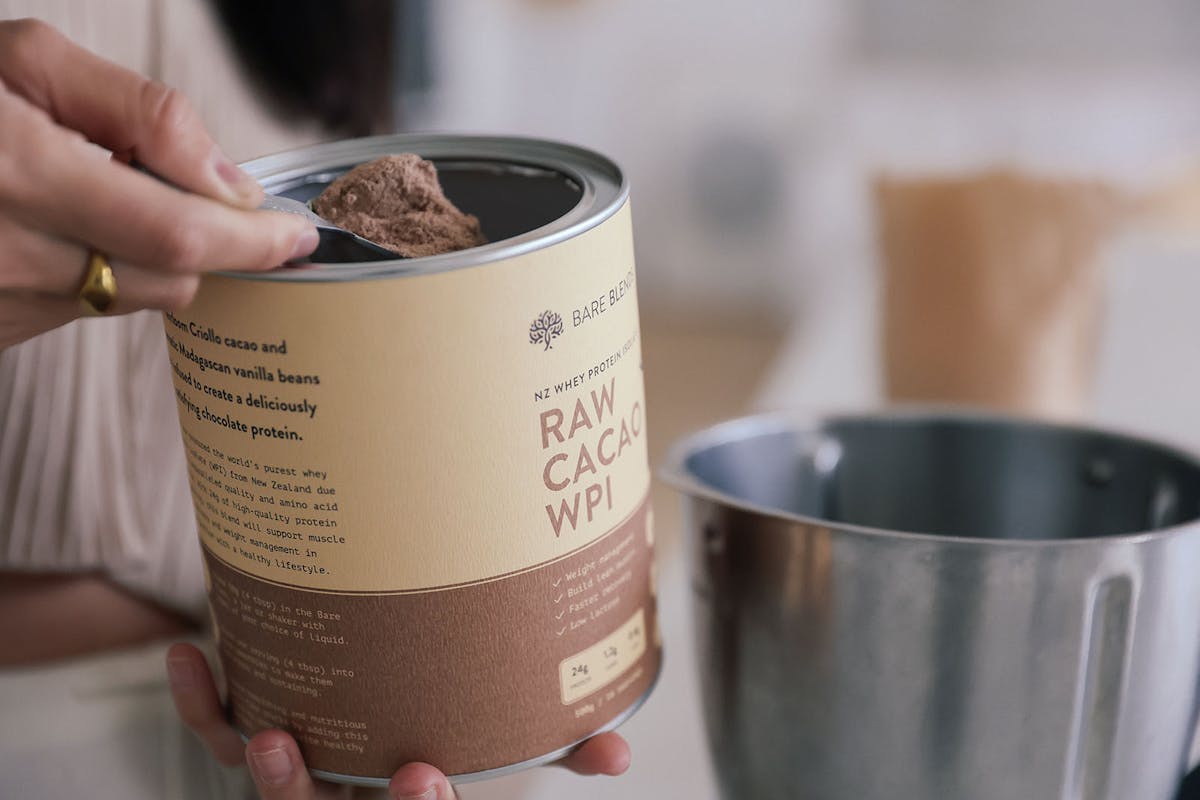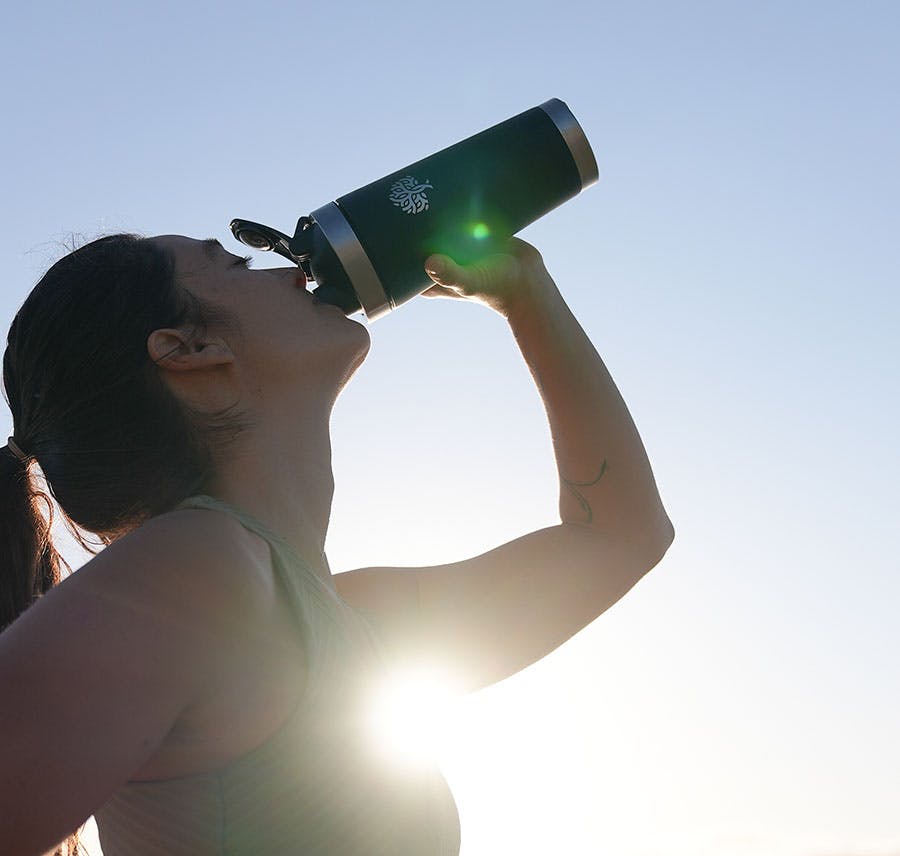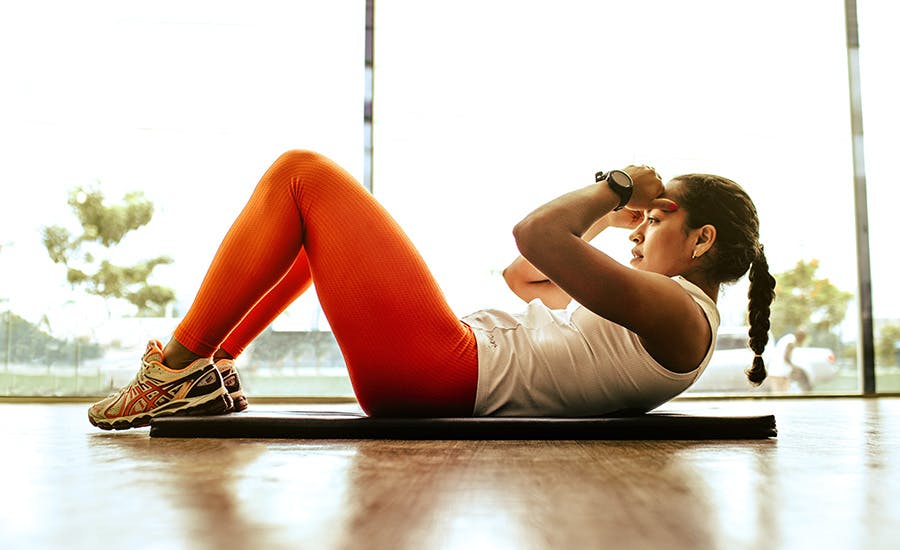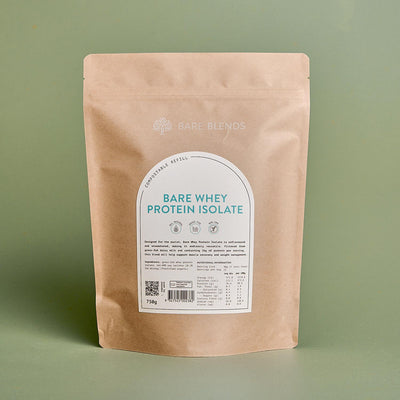The New Research: When Is The Best Time To Have Protein Powder?
Is it best to have your protein shake as soon as possible after exercise, or has that been disproven?

Bare Blends
2021-10-28

Consuming protein is something that is absolutely required for skeletal muscle growth and maintenance. This fact has been well-proven by many studies over the last few decades. There’s been an almost unshakable belief that consuming protein powder after exercise is vital to muscle recovery and growth. However, there has been recent debate as to whether or not the timing of protein intake matters.
Is it best to have your protein shake as soon as possible after exercise, or has that point been disproven? This blog post collates the most recent studies and findings to discuss the importance of the timing of post-exercise nutrient intake.
Protein and muscle synthesis
If you need a quick refresher on how protein assists muscle growth and development, here it is.
To build muscle, nutrient intervention is needed, and post-exercise nutrition is just as important as the actual workout. Muscles require enough protein and carbohydrates to effectively recover and rebuild. The amino acids in protein are essential for repairing muscle tissue after exercise-induced tearing of the muscle fibres. These amino acids also provide the basic building blocks for muscle and help to synthesise more.
After exercise, protein synthesis (the process in which cells make proteins) is typically elevated. However protein degradation (a normal process of protein turnover within the cell) is also increased. When you ingest protein and carbohydrate soon after exercise, muscle glycogen storage and protein synthesis are promoted, shifting the muscles to an anabolic (muscle building) state.

What is the anabolic window?
A notion that’s been around for nearly two decades, the anabolic window (also called the metabolic window or protein window) is the idea that the 30 minutes immediately following exercise is when you should be ingesting protein.
This was considered the ideal time that you could influence muscle mass with nutrient intake. Anything outside of this window was considered not as effective, and leaving it too late could potentially have adverse, catabolic effects.
Although it was widely accepted at the time, currently there is conflicting scientific evidence regarding the anabolic window theory.
Does timing matter?
More recently, there has been renewed study into anabolism and nutrient intervention. There is research that challenges the common belief that protein intake in and around a training session is critical for muscular adaptation, and some research that supports it.
So did these studies manage to find a more effective time to take protein? Or did they find that that timing isn’t that important after all?
We read all of the studies published in recent years, and we’ve collated the best ones for you. Here’s what we found.
New Research
Nutrient Timing: A Garage Door of Opportunity?
https://www.ncbi.nlm.nih.gov/pmc/articles/PMC7400240/
This study, published in 2020, finds that the idea of an ‘anabolic window’ would be better viewed as a ‘garage door of opportunity’. It notes how nutrient timing can positively impact performance in many more ways than muscle hypertrophy and strength building. The study questions the limits of the anabolic window and concludes that the window is much longer than originally proposed.
The study advocates peri-exercise nutrients (food intake before and during a workout) as an optimal strategy, however an individual's total daily expenditure and macronutrients need to be considered before implementing a more accurate nutritional approach.

Acute Effect of the Timing of Resistance Exercise and Nutrient Intake on Muscle Protein Breakdown
https://www.ncbi.nlm.nih.gov/pmc/articles/PMC7230944/
This study, published in 2020, looked at the effect of nutrient intake both before and after resistance exercise. The results found that a substantial mixed meal (consisting of nutrient- and protein-dense whole foods) immediately after exercise may effectively suppress muscle protein breakdown.
They found that the intake of nutrients after resistance exercise can improve anabolic response to a greater extent than having the same nutrients before exercise, or with no nutrient intake.
Maximizing Post-exercise Anabolism: The Case for Relative Protein Intakes
https://www.ncbi.nlm.nih.gov/pmc/articles/PMC6746967/
Published in 2019, this study reiterates that amino acid ingestion is the single most important nutritional variable for enhancing post-exercise muscle protein synthesis. It suggests that protein intake is relative to a range of factors, such as body weight of the individual, age, food matrix, etc.
However, it does cement the idea that a moderate intake of high quality protein such as whey, at a rate of 0.31g per kg of body weight is a suitable target for enhancing repair and synthesis of skeletal muscle tissue after resistance exercise.
Pre- versus post-exercise protein intake has similar effects on muscular adaptations
https://www.ncbi.nlm.nih.gov/pmc/articles/PMC5214805/
This study, published in 2017, challenges the anabolic window theory by investigating changes in muscle strength, hypertrophy, and body composition in response to having protein immediately before or after resistance training.
The findings showed that both pre- and post-workout protein consumption has similar effects on all of the areas studied. It advocates for both pre- and post-exercise protein intake and suggests that the anabolic window may be as wide as several hours after training, depending on pre-workout consumption.

In conclusion
Although these studies varied in many ways, they all agreed upon a few things. Firstly, they agree that post-exercise protein intake has the ability to assist the body’s shift from a catabolic to a more anabolic state.
They also all concluded that with more time that elapses after exercise, nutrient intervention becomes less effective, although this period is longer than once thought, and protein consumption can be up to a few hours after exercise with good results. Having those important nutrients available after a workout reduces exercise-induced muscle damage and inflammation, and helps to build and maintain muscle.
Finally, they agreed that having protein soon after exercise has beneficial results, whereas having no protein after exercise or neglecting post-workout nutrition would not optimise the anabolic response, and you would potentially endure a longer recovery period.
It’s therefore important to look after your body following a workout, and to get the most out of your exercise, having a high quality protein source is an easy way to ensure you’re getting optimal results and the nutrients needed for recovery, lean muscle building, and energy.
Which protein is best?
There are many things to consider when choosing a protein powder. Firstly, it’s important to consider the ingredients. It can’t have synthetic amino acids, artificial sweeteners and flavourings, synthetic fillers, or long ingredients lists.
The best protein powders only include high quality whey protein or a plant-based protein source such as pea or rice, and whole foods for flavours. The ingredients should be organic where possible, and if choosing whey; high quality, grass-fed whey protein.
Bare Blends’ WPI blends contain an optimal amino acid profile. Perfect for post-workout, these WPI blends have very high levels of protein (roughly 26g per 30g serve) and minimal amounts of sugars, carbs, and fats. They provide our bodies with the most functional protein to recover, repair and build muscles, and also boost our immunity and overall wellness.

Bare Whey Protein Isolate
- Over 26g of high-quality protein per serving
- Developed for taste and performance
- 100% natural, free of anything artificial or nasty

Vanilla Coconut Plant Protein
- Over 19g of plant-based protein per serving
- Organic pea and sprouted brown rice protein
- Australian Certified Organic
References:
https://www.ncbi.nlm.nih.gov/pmc/articles/PMC3577439/
Nutrient timing revisited: is there a post-exercise anabolic window?
https://www.ncbi.nlm.nih.gov/pmc/articles/PMC7230944/
Acute Effect of the Timing of Resistance Exercise and Nutrient Intake on Muscle Protein Breakdown
https://www.ncbi.nlm.nih.gov/pmc/articles/PMC6746967/
Maximizing Post-exercise Anabolism: The Case for Relative Protein Intakes
https://www.ncbi.nlm.nih.gov/pmc/articles/PMC5214805/
Pre- versus post-exercise protein intake has similar effects on muscular adaptations
https://journals.lww.com/nsca-scj/Fulltext/2014/12000/The_Timing_of_Postexercise_Protein_Ingestion_Is_Is.12.aspx
The Timing of Postexercise Protein Ingestion Is/Is Not Important
https://www.ncbi.nlm.nih.gov/pmc/articles/PMC7400240/
Nutrient Timing: A Garage Door of Opportunity?
https://jissn.biomedcentral.com/articles/10.1186/1550-2783-10-53
The effect of protein timing on muscle strength and hypertrophy: a meta-analysis
